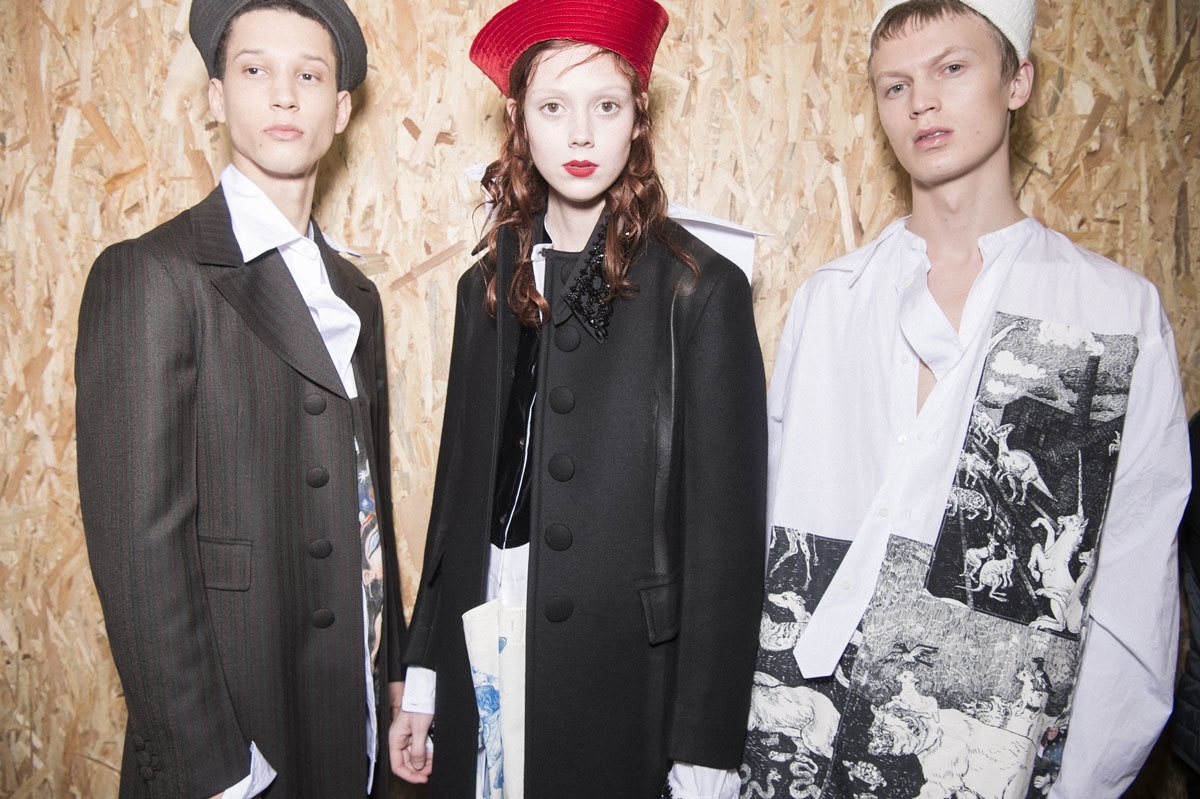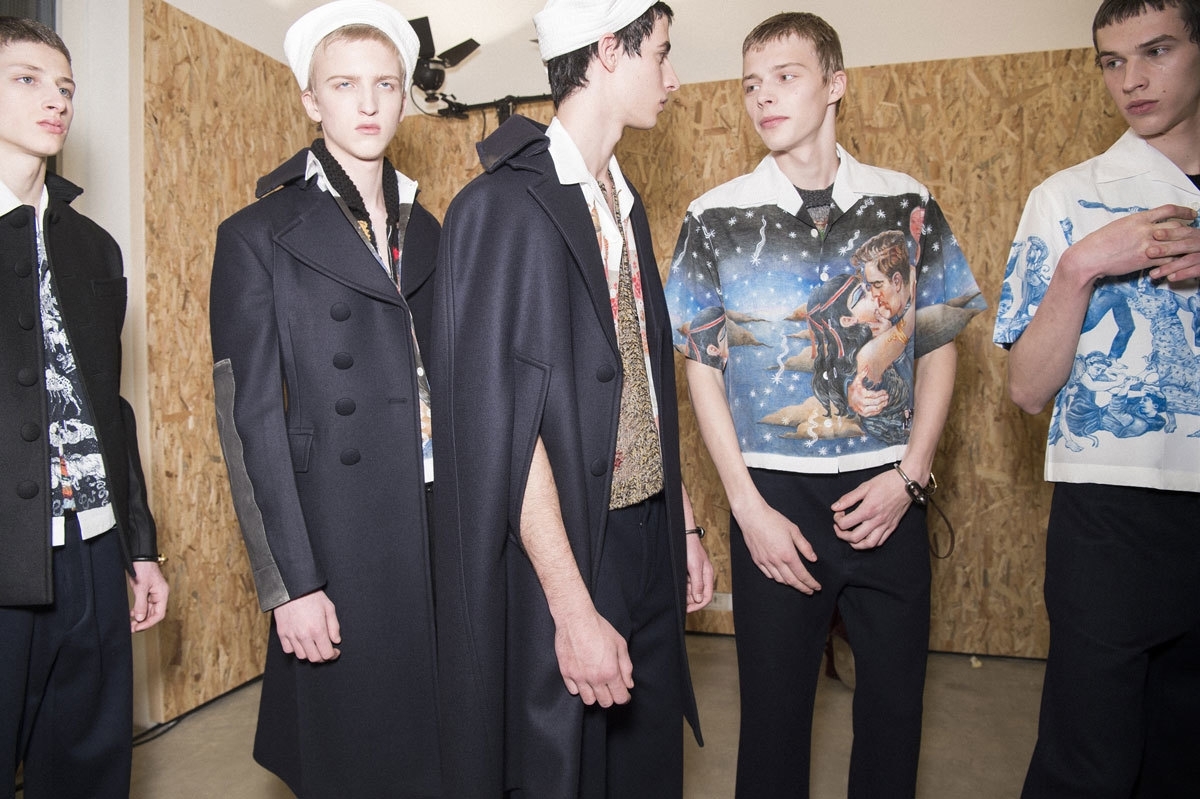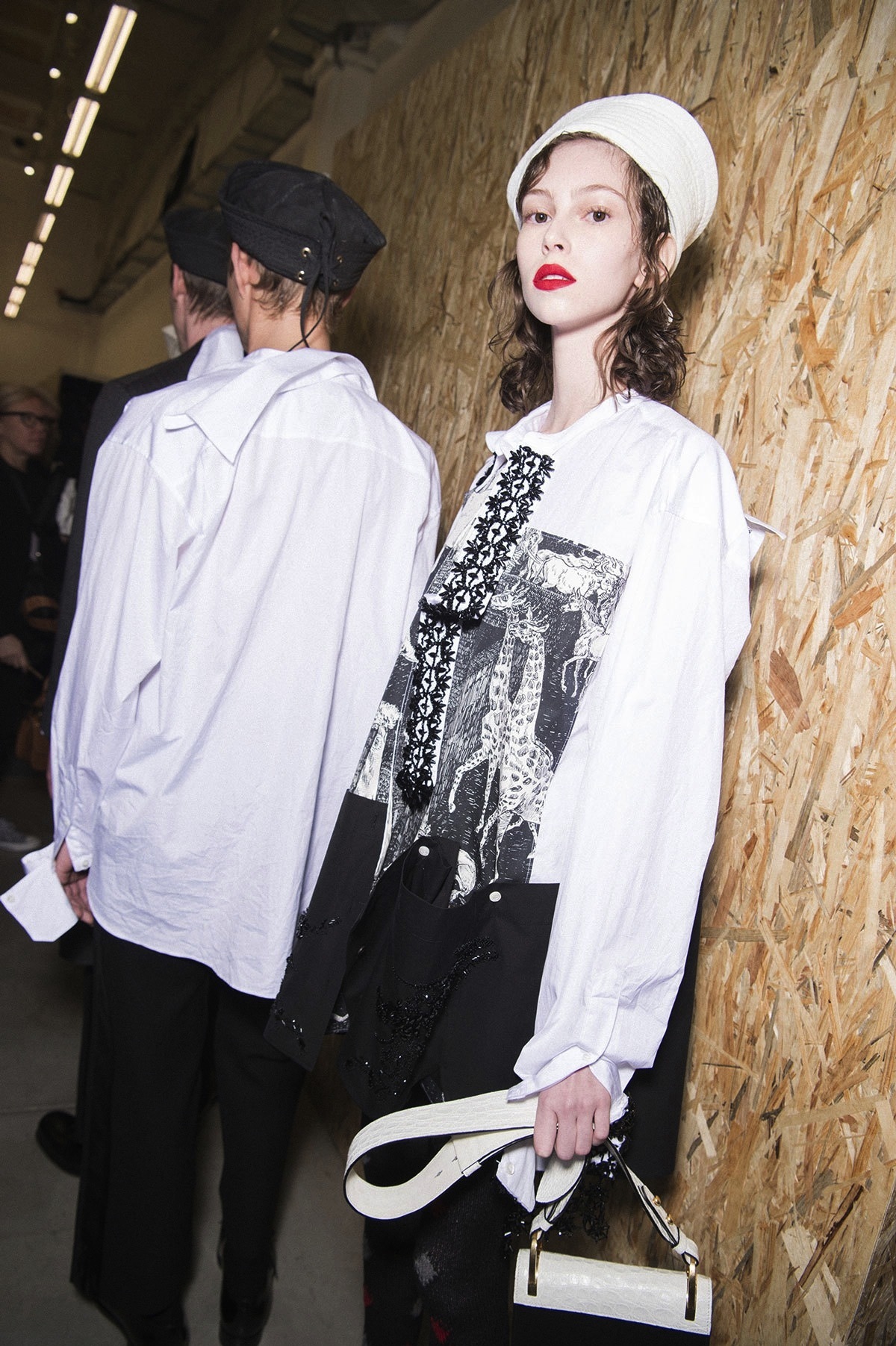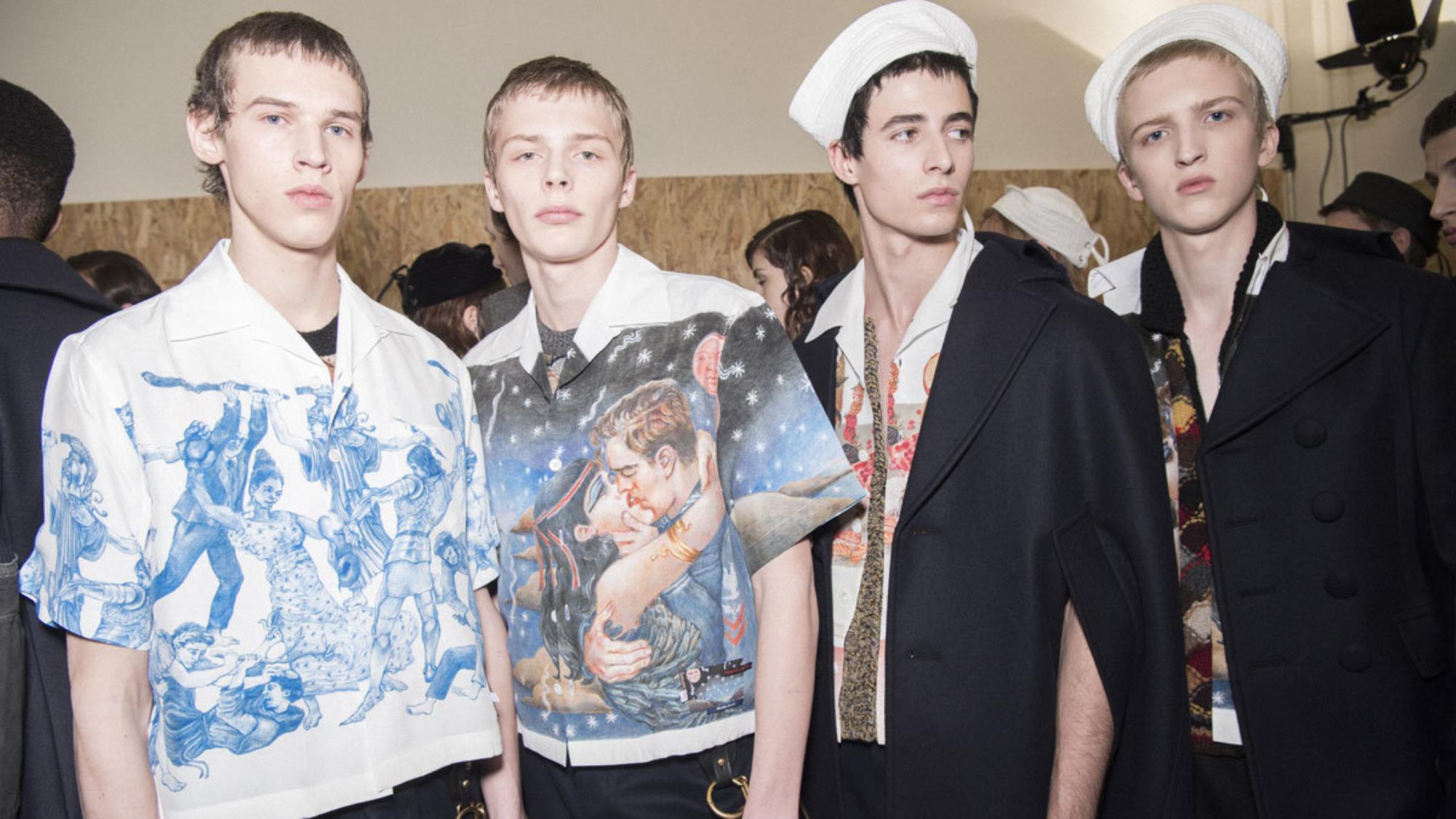Hercules bashes a club-wielding Sigmund Freud with a pair of Incredible Hulk fists. Nina Simone sports boxing gloves while dancing with Joan of Arc, who shakes Macarenas. If that sounds like a world history seminar meets an episode of Celebrity Deathmatch, you’re not so far off. These sparring singers and scholars, gods and Guevaras, form The Important Ones, one of four original artworks featured on fabrics in Prada’s fall/winter 16 menswear collection.

This blue colored pencil scene was dreamed up by Christophe Chemin, a self-taught French artist who deals in words and images with equal dexterity. Chemin dances between drawing, directing, photographing, designing, and writing. Most recently, the Berlin-based polymath was commissioned by the iconic Italian designer to create her newest collection’s prints. Though Mrs. Prada’s creased cotton shirts, naval wool jackets, and sailor hats mined different pockets of the past, her offering was concerned with the here and now — the troubled world we live in.
Showgoers were presented with a five page press release announcing the creative collaboration. It included a chronological list of years and corresponding cultural moments that inspired Chemin’s pieces. For example, Survival Utopia cites a medieval tapestry dating back to 1500 alongside ARK: Survival Evolved, a PlayStation game released last year. “People will see what they want in the clothes,” said Chemin. “The references are there for the people that are curious enough.”

You create across so many different disciplines. Which did you first gravitate towards and how did your practice blossom?
I think artists have certain responsibilities. You have to be honest with what you do, otherwise it’s really an awful waste of time. There is so much trash all around, and waste. It is sad and terrifying. The world is full of dull images, everywhere — in your face from the moment you wake up. People ‘like like like’ the same way they dislike. It means nothing; it is a farce. I feel like we need to give back meaning to images. As an artist, I always ask myself about the necessity of creating another one.
I constantly have ideas, it’s just my nature. I like to be able to express them through different mediums — to be able to fully express what I want to say in the right way. Certain ideas work better with specific mediums, so I end up jumping from one to another. Some work as books, some as movies, drawings, or sculptures. You never really know, so it’s good to test and to be able to decide what works the best in the end. But it’s just all the same to me; it’s always the same voice.

How do you get inspired and what inspires you?
Pretty much everything. I’m a bit like a sponge, I react very quickly to things around me. Of course I have obsessions, things that always seem to recur again and again in the work. One thing that I like, and that I don’t refuse myself as an artist, is beauty — simple beauty.
I love the way you described your practice in your press release: like a seamstress sewing one thing to another.
The practice is a bit like delicate embroidery, yes. I have these instinctive ideas, but I need to put them next to each other on the table and see how they react. It’s a bit like editing. I don’t invent big things, I’m not delusional. I accumulate ideas, each is like a thread. I start to sew and create certain patterns with all these threads.

How did the collaboration with Mrs. Prada come about?
I am a big fan of her work, and what she does means a lot to me. I find her work much more interesting than most of the so-called artists I see on the market. I like what Mrs. Prada does with fashion because I feel close to her way of working. She really doesn’t care about what people think she should do, she just does it and I find it brilliant. What she does has a real value and means something,which is not the case with most of what I see these days.
What did that collaborative process entail? Did you discuss the ideas Mrs. Prada was considering in depth, or was the commission more open ended?
I know the brand pretty well. Mrs. Prada and Fabio Zambernardi had directions and moods they were working on. They asked me to propose them a list of concepts and she picked out four ideas that I developed as drawings with different techniques I often use. The concepts were pretty clear and close to the result. There was no censorship; we talked a lot with Fabio and her, and they totally trusted me, from beginning to end.

Why was it important for you to share a list of reference artworks and years for each of your drawings with the show attendees?
The list of years comes from the fact that I wanted to design specific tags for each shirt. Each shirt has a collection of tags: the Prada tag, a small jacquard with a visual of stars falling into the sea, the title of each drawing, and years. Each year refers to a very special moment in history that related somehow to the drawing. It’s a sort of game and a way to reveal part of the process of creating the drawings. It’s also to point out that things don’t come out of nowhere. But mostly, we liked to have these years sewn on the shirt as memories from the past — it has a certain sweetness and mystery.
Do you plan to collaborate with Mrs. Prada, or other fashion designers, in the future?
I don’t want to say too much, but yes, more collaboration is coming with Mrs. Prada. About other fashion designers, I don’t want to be rude, but I have no desire at all to work with any of them. Prada is the only place where I could have done what I did; it wouldn’t have happened anywhere else. There is an immense trust and respect there. It’s something precious and rare.

Despite its exploration of the past, the collection is concerned with the contemporary. Why is it important to look back?
We are going through harsh times and there is no escape. It is not a time for vague abstractions or things that are so conceptual that they are bleakly non-understandable. These are not abstract times. We come from somewhere, we belong to something bigger than ourselves. Looking at the past — and not in a nostalgic way — can help humanity in search of truths to find hope. To learn to be humble would be a great thing, because, after all, we human beings are truly nothing.
What’s exciting you about tomorrow?
Hope. The idea that there is hope for things to change and to get better in this world. Hope to do something. Hope to meet interesting and beautiful people to share moments with. Hope for beauty.

Credits
Text Emily Manning
Photography Jason Lloyd Evans
All images courtesy the artist
